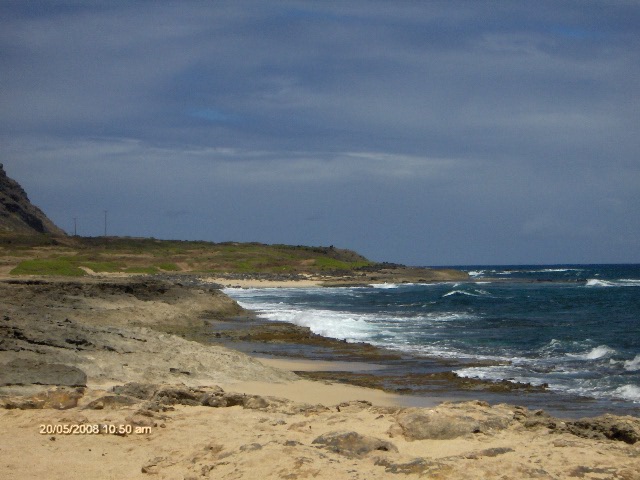Blog
News, updates, finds, stories, and tidbits from staff and community members at KAHEA. Got something to share? Email us at: kahea-alliance@hawaii.rr.com.
Monk Seals: Critcal habitat, Critical discussion
In the last few weeks, we’ve received letters of strong support and strong opposition to the proposed rule on critical habitat for the Hawaiian monk seal. We hope this blog will open up some safe space for discussion.
Ahi Feedlot Abandons Ship!
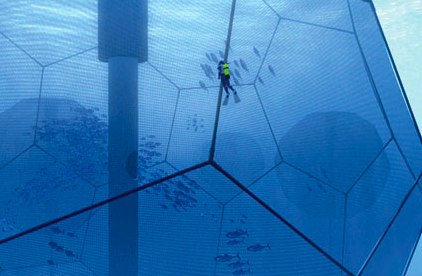
Mahalo to all who took action in the last few months, asking the Army Corps of Engineers to hold a public hearing on a permit to allow Hawai’i Ocean Technology, Inc. (HOTI) to build a proposed 247-acre ahi tuna feed lot off the Kohala Coast. 100% of the feed for this project would be imported from fisheries in places like Peru, and 90% of the tuna they feedlot will be exported to Japan and the continental U.S. (Does this sound like local food sovereignty to you? Not so much.)
Last week, we got news that HOTI has withdrawn their permit application. They may still be looking to do a smaller one-cage “experimental” operation. We’ll keep you updated. But for now, count this is a victory for the ocean. Mahalo for your action! Thanks to you, we’re a little closer today to a collective vision of food sovereignty and a functioning food system for Hawai’i. To learn more or to join the hui in support of pono aquaculture, you can go to www.ponoaqua.org
Monster Salmon. And not in a good way.
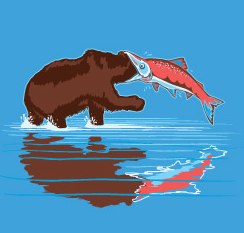
They came for our taro. Is it any surprise that fish is next on the list? Today, federal officials in the U.S. are considering approval of the first genetically modified fish. GMO-salmon. Ick.
Salmon are sacred. It’s time to show our solidarity for indigenous peoples, first nations, and fishing and nearshore communities the world over. We’re a fish and poi culture, and we’ve got to be concerned about genetic modification of native species. Genetic modification is a part of a broken industrial food system that just doesn’t work. It isn’t serving communities, farmers, fishers, or consumers. We want sovereignty… over what’s on our plates. And we’re saying no to untested, unlabeled GMO foods.
From our friends at Food and Water Watch:
Franken-Fish have won the race to be the first genetically engineered animal approved for human consumption. The aquaculture industry has genetically engineered a fish that grows at twice the normal rate, so they can get it to market sooner and make more money.
The scary thing is, the FDA doesn’t do its own testing of genetically engineered animals, it relies on information provided by the company that wants approval. And because GE salmon are being considered as a new animal drug, the process isn’t focused on what happens to people who eat genetically engineered animals. So on top of the health concerns posed by raising salmon in crowded factory fish farms that rely on antibiotics and other chemicals, the FDA could be adding the unknown risks of GE salmon to the mix.
The FDA is the same agency that’s in charge of overseeing the egg industry, and we see how well they’ve done that job. The FDA does not have the capacity to ensure the safety of food that is not genetically engineered, they certainly should not be in charge of allowing the first GE animal into our food supply.
We’ve got just 12 days until the FDA takes formal steps to approve GE salmon, so it’s up to us to demand that President Obama direct the FDA to reject this request.
Take action to stop this mutant fish from reaching your plate:
http://action.foodandwaterwatch.org/p/dia/action/public/?action_KEY=4693
(Illustration at top is by the talented Glenn Jones at threadless.com. His GE Salmon shirt is now sold out!)
That Deafness? It's Only Temporary.
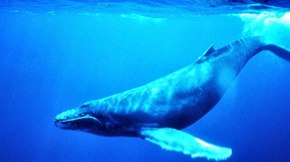
Many of you followed the sonar lawsuit from 2008, in which KAHEA, in partnership with Earthjustice and other local, national and international NGOs, sued the U.S. Navy over its proposed expansion of military exercises around Hawai’i, including the Northwestern Hawaiian Islands. The State of Hawai’i, at our urging, also asked the Navy to comply with laws protecting endangered species in Hawai’i. Not surprising, the Navy refused.
Now, there’s another round of public scoping hearings for more sonar and more detonations. But don’t worry about those whales. According to the U.S. Navy, the deafness caused by underwater explosions and sonar is only temporary.
An update on U.S. Navy training in Hawaiian waters, from the Hawaii Independent:
The U.S. Navy announced its intent to prepare an Environmental Impact Statement (EIS) and Overseas EIS (OEIS) relating to military training and research, including sonar and detonating explosives, within the Hawaii-Southern California Training and Testing (HSTT) study area.
Public scoping meetings throughout Hawaii have been scheduled to hear comments. Last year, the federal government issued authorization to the U.S. Navy to impact whales and dolphins while conducting sonar training exercises around the main Hawaiian Islands for five years, Environmental News reported.
The letter of authorization and accompanying rules allow for injury or death of up to 10 animals of each of 11 species over the five years covered by the regulations. The Navy requested authorization under the Marine Mammal Protection Act because the mid-frequency sound generated by tactical active sonar, and the sound and pressure generated by detonating explosives, may affect the behavior of some marine mammals or cause what the Navy calls “a temporary loss of their hearing.”
Mid-frequency sonar can emit continuous sound well above 235 decibels, an intensity roughly comparable to a rocket at blastoff, according to Environmental News.
The sonar blasts travel across hundreds of miles of ocean to reveal objects, such as submarines, underwater. The National Marine Fisheries Service (NMFS) will be a cooperating agency in preparation of this EIS and OEIS. In January 2009, the NMFS’s ruling stated: “After reviewing the current status of the endangered blue whale, fin whale, humpback whale, sei whale, sperm whale, Hawaiian monk seal, green sea turtle, leatherback sea turtle, loggerhead sea turtle, and Pacific ridley sea turtle, … [Navy training activity in the Hawaii Range Complex] each year for a five-year period beginning in January, 2009, are likely to adversely affect but are not likely to jeopardize the continued existence of these threatened and endangered species under NMFS’s jurisdiction.”
While Earth Justice wants the Navy to stop using sonar until it can avoid serious injury to marine mammals, the environmental group recommends several things the Navy can do to minimize the harm to marine life: Impose seasonal and geographical limitations, avoid nursing areas, ramp sonar up slowly, avoid areas that were created specifically to protect endangered marine life, create a 25-mile safe haven distance from shorelines, avoid steep-sloping seamounts that provide important habitat for many marine species, prohibit testing at night or other times of low visibility, and adopt protocols similar to those of other naval forces to minimize the impact on marine wildlife.
The Navy’s latest proposed action is to conduct training and testing activities within the at-sea portions of existing Navy training range complexes around the Hawaiian Islands and off the coast of Southern California. Training activities, such as sonar maintenance, explosives, and gunnery exercises, may occur outside of Navy operating and warning areas. In 2009, the Navy instituted mitigation measures relating to sonar that include stationing lookouts, adjusting sonar decibel levels when marine animals are detected within 200 to 1,000 yards, and increased visual and aerial surveillance for marine life. The HSTT study area combines the at-sea portions of the following range complexes: Hawaii Range Complex, Southern California Range Complex, and Silver Strand Training Complex. The existing western boundary of the Hawaii Range Complex is being expanded 60 miles to the west to the International Dateline.
The HSTT study area also includes the transit route between Hawaii and Southern California as well as Navy and commercial piers at Pearl Harbor and in San Diego, CA where sonar may also be tested.
Public scoping meetings will be held between 4:00 p.m. and 8:00 p.m.
- Tuesday, August 24, 2010, Kauai Community College Cafeteria, 3-1901 Kaumualii Highway, Lihue, HI.
- Wednesday, August 25, 2010, Disabled American Veterans Hall, Weinberg Hall, 2685 North Nimitz Highway, Honolulu, HI.
- Thursday, August 26, 2010, Hilo High School Cafeteria, 556 Waianuenue Avenue, Hilo, HI. 6. Friday, August 27, 2010
- Maui Waena Intermediate School Cafeteria, 795 Onehee Avenue, Kahului, HI.
The meetings will consist of an informal, open house session with informational stations staffed by Navy representatives. Additional information concerning meeting times is available on the EIS and OEIS website at http://www.HawaiiSOCALEIS.com. The scoping process will be used to identify community concerns and local issues to be addressed in the EIS and OEIS. All comments provided orally or in writing at the scoping meetings, will receive the same consideration during EIS and OEIS preparation. Written comments must be postmarked no later than September 14 and should be mailed to: Naval Facilities Engineering Command, Southwest, 2730 McKean Street, Building 291, San Diego, CA 92136-5198, Attention: Mr. Kent Randall—HSTT EIS/OEIS.
Come Talkstory - Shoreline Fishing Issues at Ka‘ena - June 27th
On Sunday June 27th starting at about 2:00 pm, fishers and ‘ohana will be gathering in Waiawa to discuss issues surrounding the management of Ka‘ena Point on O‘ahu. (Click to see map)
Located at the most northwest point of O‘ahu, Ka‘ena is one of the last relatively wild shorelines left on the island. It is a beloved fishing spot for many families, a spiritual pathway into the afterlife, and a refuge for endangered birds.
Its extreme weather and remote location helped to limit development, though it has suffered its share of urban burdens, including train tracks, military training, and most recently mud-bogging and uncontrolled bonfires.
As you may already know, Ka‘ena has been the focus of many regulatory attempts over the years. Most of these past efforts have met with failure due to lack of community support. Here is a link to the long list of abandoned management schemes at Ka‘ena.
With a brand of tenacity unique to state government, once again, the community faces a new management plan developed by staff at the Department of Land and Natural Resources with only selected input from community members. The state needs a new management plan because Ka‘ena will likely be highlighted as one of O‘ahu’s wilderness camping areas under DLNR’s new “Recreational Renaissance.” Recreational Renaissance is just a nifty name for another scheme to raise money from the use of state land in a wide range of not-always-compatible ways, including the collection various permit and entry fees to state parks. A draft of the state’s plan for Ka‘ena will be open for general public comment at a hearing in late July.
In anticipation of this meeting and in response to many complaints about state management, shoreline fishers from around O‘ahu are gathering at a farm in Waiawa on June 27th to talk about the many issues facing this community. The recent trend in harassment of fishers by DLNR enforcement officers and HPD has led many to forego fishing the way their families have for generations. This is related to current state regulations that limit the longstanding practice of over-night fishing and current proposals to impose new permitting requirements on shoreline fishers. Click here to visit a blog specific to Ka‘ena management issues.
This is a tough issue to grapple with. For me, I think the disconnect was said best by one lifelong fisherman from Waipahu:
“Why you imposing fees on me, when I only can catch enough to feed my family, but you do nothing, nothing to prevent the massive fish takes by these commercial guys, who come in here just when the fish start to run and take the whole school one time?”
If you are interested in learning more about shoreline fishing issues on O‘ahu and want to connect with the local fishing community, please contact Summer at 753-4221/ culturalpractice@gmail.com to RSVP for the public meeting on June 27th at 2pm in Waiawa. She asks that you bring own chairs.
April Round-up on Pono Aquaculture
Mahalo to Rob Parsons (our amazing Food and Water Watch Hawaiʻi Outreach Coordinator and our friend and fellow member of the Pono Aquaculture Alliance) for this April round-up on efforts towards sustainable, pono aquaculture in Hawai’i:
The month of April has been full-tilt on the forefront of aquaculture issues in Hawaii, and beyond. We announced the formation of the Pono Aquaculture Alliance, broadened the scope of our outreach, and got a good deal of press coverage (see links below).
We gave presentations at UH-Maui College, UH-Manoa, Kawaihae, and in mauka Kona, taped an AKAKU public access TV show with Elle Cochran on Maui, did a two-hour radio show with Brickwood Galuteria, held a press conference at the capital, talked with legislators, and met candidates Neil Abercrombie and Gary Hooser at a Dem party function. We also met with Walter Ritte and Noelani Lee Yamashita on Molokai, and see their fishpond restoration efforts, and met with Ed Cichon of Maui Fresh Fish, LLC, who hopes to raise opakapaka in cages off Lanai. Yesterday was the NOAA regional “listening session” to accept input on NOAA’s efforts to draft a “sustainable ocean aquaculture” policy.
What a month! From us at KAHEA, mahalo pumehana to all those who are giving of their time, efforts, and mana’o on this issue–for their passionate care for our ocean, Hawaiian waters, Hawaiian fish, food sovereignty & security, and the aloha ‘āina that powers this movement.
TV and newspaper links:
Andrew Gomes/ Honolulu Advertiser on PAA press conference
http://www.honoluluadvertiser.com/article/20100409/BUSINESS/4090332/Group+urges+fish-farming+safeguards
Coalition champions sustainable fish production in Hawaii
http://www.hawaii247.org/2010/04/09/coalition-champions-sustainable-fish-production-in-hawaii/
Coalition alleges fish farms hurt land
By Gene Park HONOLULU STAR-BULLETIN
http://www.starbulletin.com/business/20100409_Coalition_alleges_fish_farms_hurt_land.html
Is There an Open Season on Open Ocean Aquaculture?
Reported by: Ron Mizutani/ KHON Channel 2
http://www.khon2.com/content/news/developingstories/story/Is-There-an-Open-Season-on-Open-Ocean-Aquaculture/asLsjbbXBUSQH84WJdKZEQ.cspx
Residents voice concerns over aquaculture project
by Chelsea Jensen/ West Hawaii Today
Saturday, April 10, 2010 7:17 AM HST
http://www.westhawaiitoday.com/articles/2010/04/10/local/local02.prt
Net pen in harbor draws investigation
by Carolyn Lucas/ West Hawaii Today
Wednesday, April 7, 2010 9:30 AM HST
http://www.westhawaiitoday.com/articles/2010/04/07/local/local04.txt
Community questions fish farms
By Hadley Catalano/ Big Island Weekly
Wednesday, April 14, 2010 9:59 AM HST
http://www.bigislandweekly.com/articles/2010/04/14/read/news/news08.txt
Fish farm frenzy
Watchdog group releases report criticizing open aquaculture in Hawai‘i
SEAMUS HOGG/HONOLULU WEEKLY
APR 14, 2010
http://honoluluweekly.com/feature/2010/04/fish-farm-frenzy/
Coalition knocks nascent Hawaii industry
By Denise Recalde
editorial@fis.com/ www.fis.com
http://fis.com/fis/worldnews/worldnews.asp?monthyear=&day=12&id=36169&l=e&special=&ndb=1%20target=
Report Blasts Hawaii Aquaculture
Environmental Group Claims Fish Farming Not Environmentally Sustainable
Dick Allgire KITV 4 News Reporter
POSTED: 2:48 pm HST April 8, 2010
http://www.kitv.com/news/23096058/detail.html
NOAA "Listening Session" Report-back
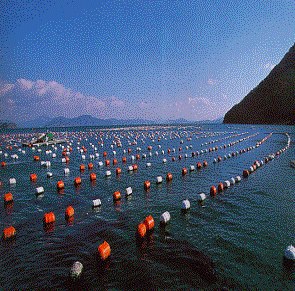
Mahalo to Rob Parsons, long-time Maui resident, journalist, and local environmental advocate for his detailed report-back on the Honolulu NOAA “listening session” yesterday. The post below is from his notes on the meeting:
Yesterday’s NOAA listening session was one of six being held nationwide to solicit input as NOAA strives to establish a policy for “sustainable ocean aquaculture.” About 80 people showed up at the second floor of the Ala Moana Hotel, a block from the Hawaii Convention Center and Ala Moana Shopping Center, for the 2 1/2 hour meeting.
It is clear that the word went out to those in the industry, and associated with UH, the Oceanic Institute, and the Hawaii Aquaculture Association. Fortunately, even given the fact that the meeting was in Honolulu only (no provisions for participation by those on neighbor islands) and in the middle of a workday, we had a decent showing from members of the Pono Aquaculture Alliance, and conservation groups.
The session was facilitated by Andy Winer, who headed the Hawaii Obama presidential campaign and is now a political appointee to NOAA. I spoke with him afterwards; he said this is very preliminary and very wide open, just asking input for now, He said when they come forward with a draft policy (he mentioned 4 months, but I think that is ambitious) he said things will be much more serious. He spoke of their goal: “To implement a new sustainable aquaculture policy.” “The policy components are that it be science-based, eco-system focused, promote innovation, and that there be a clear and efficient management system. The big question is, What will be NOAA’s role?”
He also mentioned the importance of production, restoration, and enhancement. Also jobs and socio-economic factors. He also said this should look at how it fits with other NOAA programs.
After his intro, Dr. Jo Ann Leong of Hawaii Institute of Marine Biology gave a pro-OOA Powerpoint. Said there is no way historic fishponds can provide enough fish. Said Hawaii 20250 Sustainability Plan supports this, and that we should “create a sustainability ethic.” We’re way behind China and Norway in sales. ($34.7M in 2008….mostly in algae nutraceuticals, not finfish, I’d guess). Mentioned challenges.
NOTE: Keynote speaker Dr. Leong is on the board for Hawaii Oceanic Technology, a company currently proposing a massive ahi feedlot off the coast of the Big Island. Is this a bit too cozy a relationship? Is this pono?
Overall, about 20 people spoke in favor of supporting open ocean aquaculture, and 10 of us expressed concerns and cautions:
Strongly Pro-OOA
1) Dave Takaki (?) “resurrecting fishponds is not economically feasible, and is virtually insurmountable”
2) Dr. Tetsuzan “Benny” Ron, UH Aquaculture Prog. Coord. – “building a sustainable future….all should support this”
3) Todd Low, Mgr. Aquaculture Dev’t Prog., Dept of Ag- “diversify economy, food self-sufficiency. HI sets the standards”
4) John Corbin, consultant (former director ADP) “Farming in the EEZs puts food on tables.” “We have BMPs.”
5) Todd Hendrix, retired science teacher- uses Cousteau 1973 quote (!). “HI oceans are nutrient poor and this helps.”
6) Ron Weidenbach, Pres. HI Aqua Assoc.- supports “truthful presentation based on science” wants increased R&D.
7) Tony Ostrowski, Pres. Oceanic Institute- said their mission is to secure a seafood source (for consumption) HOWEVER, their website give the following mission statement: The mission of the Ocean Institute is to inspire all generations, through education, to become responsible stewards of our oceans.
8. Steven Von Kampen Louis, young, student, in favor.
9) Brian Miyamoto, Hawaii Farm Bureau Federation- “Huge opportunity. Should be able to develop safe practices.”
10) Dr. Steven Dollar, does water monitoring for Hukilau et al- “Problems don’t exist here.”
11) Michael Berman- “spend time listening to the people who are in the (aquaculture) field.”
12) Ronnie Nasuti (?), exec chef, Roy’s- “Can’t talk about science or politics—I cook. People love eating the moi.”
13) Norman Nong (?), Cinnamon’s restaurant- “can’t afford local fish on our menu” “I’m for aquaculture, of course.”
14) Clyde Tamaru, UH-CTAHR (former UH-Sea Grant)- Used the sea horse farm at NELHA as an example. (!)
15) Kimokeo Kapahulehua, pres. Fishpond assoc on Maui- “Keep the culture intact.” Then in his last 30 seconds he
said we should support Maui Fresh Fish LLC’s plan to raise opakapaka off Lanai. (he is their hired consultant).
16) Sean Martin, WESPAC- Support HB 4363, etc. Magnuson-Stevens act defines OOA as a “fishery.”
17) Bill Spencer, CEO HOT and HVCA- (waited until last to speak) “I’m the only one in the US who has been given the
permit for a tuna farm. I’m proud to be for-profit and make money for my investors. We are environmentally
responsible and economically sustainable. Hawaii is the perfect model to follow for permitting. The permit process
has consumed more than one third of our investment capital to date.”
Support with Conditions:
18) Steve Chaiken, HAA, Molokai Sea Farms- Has 22 earthen ponds w/ fish, shrimp, seaweed. “Very expensive to simulate the ocean on land.” “Some say we shouldn’t use the Pacific Ocean to raise fish—I share some of those concerns.” NOAA needs to partner for BMPs. “Gov’t isn’t good at planning carrying capacity. Look at Waikiki.” “Don’t let an asset turn into a liability.” “What we’ve done well here is research. Esp. disease mgmt.”
19) Glen Martinez, Olomana Gardens (Waimanalo)- “should have a mtg on Big Island—they have 22 aquaponic farms.”
20) Randy Cates, Hukilau Foods- After 10 years, I’m tired. Likes “balance” in the ocean. Donates fish to groups.
Not for OOA without stringent guidelines
22) Marti Townsend, KAHEA- “Hawaii is not your laboratory, its resources are not expendable.” NOAA could support fishpond restoration. “Use traditional knowledge.” Challenges the idea of ‘farming the ocean’ (Cousteau). “Plantation ag over the past century has been very harmful. Need more outreach. Only a 2-hour mtg, and at Ala Moana Hotel? Should be on the Big Island. You are limiting who will attend by holding it here.”
23) Trisha Kehaulani Watson, PhD.- Two points: Culture and community are missing. Ocean is also a cultural resource. It is both our church and our classroom. Community—Conflict is brewing here. Let state and local gov’ts come up with local solutions that are site-appropriate.
24) Rob Parsons, PAA, FWW et al- mainly read PAA criteria and unity statement. Asked that NOAA take a step back and ask whether a OOA policy should be developed, not how.
25) Dr. Neil Frazer, UH-“Would be sorry to see Hawaii and the U.S. Repeat the mistakes of my native British Columbia.”Should learn from the mistakes made in (mis-)mgmt of capture fisheries. Listed criteria for pono aquaculture.
26) Keiko Bonk, Marine Cons. Biol. Institute and Save Our Seals- “Questions about the ability to be a clean industry. We’d like to see a plan before allowing ventures to start up first. Especially for large-scale ventures. Large ag has ruined our land. Start small—large doesn’t work. What does sustainable mean? Long-term good, and minimal consequences. Too many factors don’t make sense as an industry.”
27) Dave Raney, Chair Sierra Club Marine Action Team- “Using mostly herbivorous fish is important. SC supports OOA only if it is truly sustainable and ecologically sound. NOAA should develop policy with specific criteria. Serious reservations about industrial scale operations.”
28) Linda Paul, Hawaii Audubon Society- Set enforceable national standards. OOA shouldn’t be substitute for re-stocking overfished stocks. Forage fish stocks are already fully exploited. Shouldn’t be substituted with soy because of naturally occurring estrogen.
29) Zuri “Z” Aki, UH student, “Support aquaculture, but I don’t support the current model of caged fish. Look into
getting communities into the ahupua`a (land-to-sea) model, not the corporate model.”
*KAHEA also submitted comments on behalf of Uncle Pilipo Souza and Uncle Isaac Harp.
Written comments may be submitted up until May 14th. Comments may be submitted through this link: http://www.nmfs.noaa.gov/aquaculture/policy1/comments.htm

